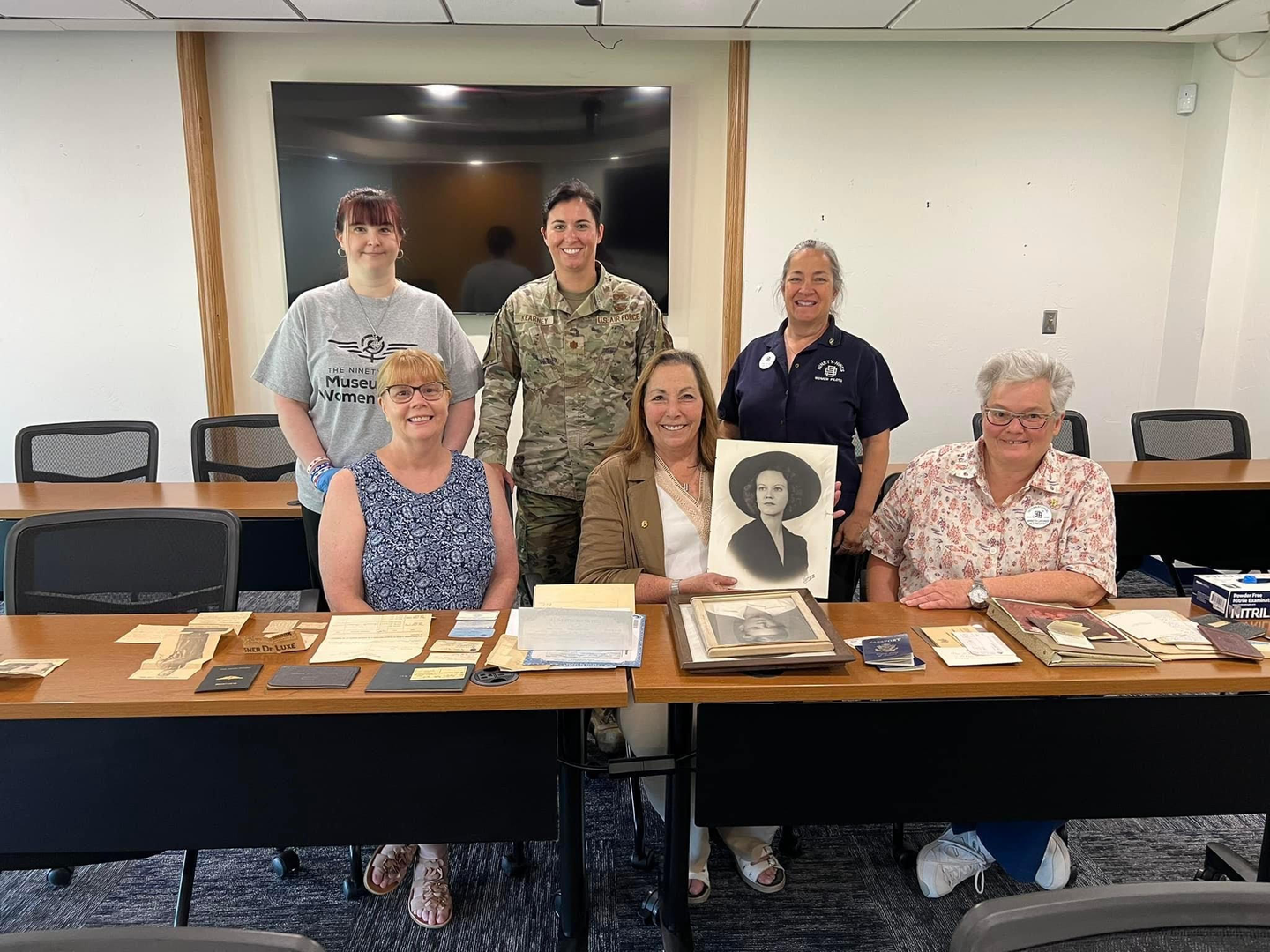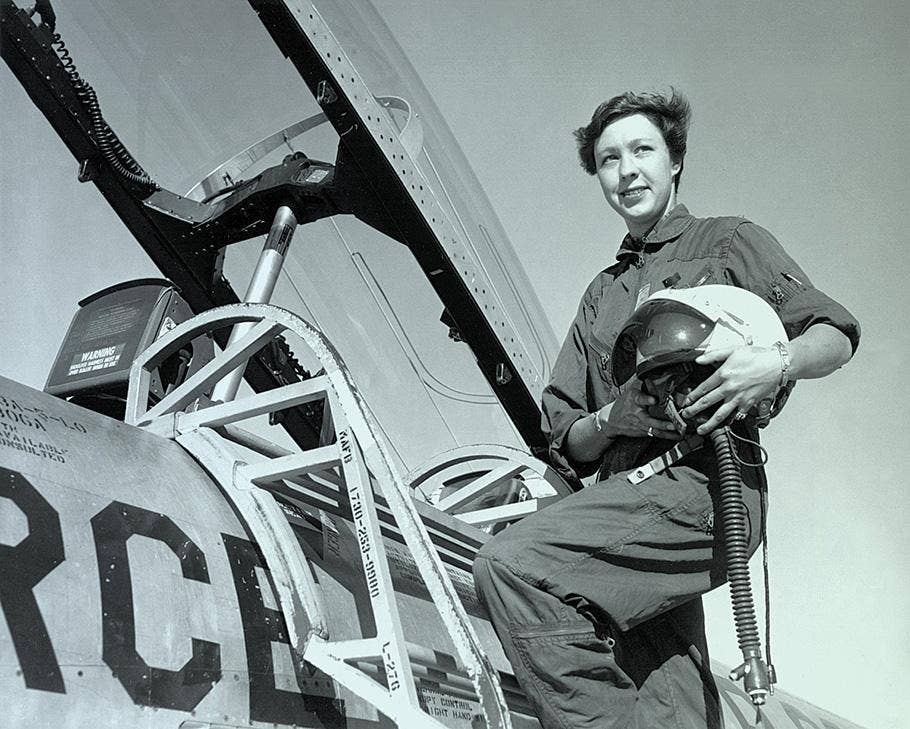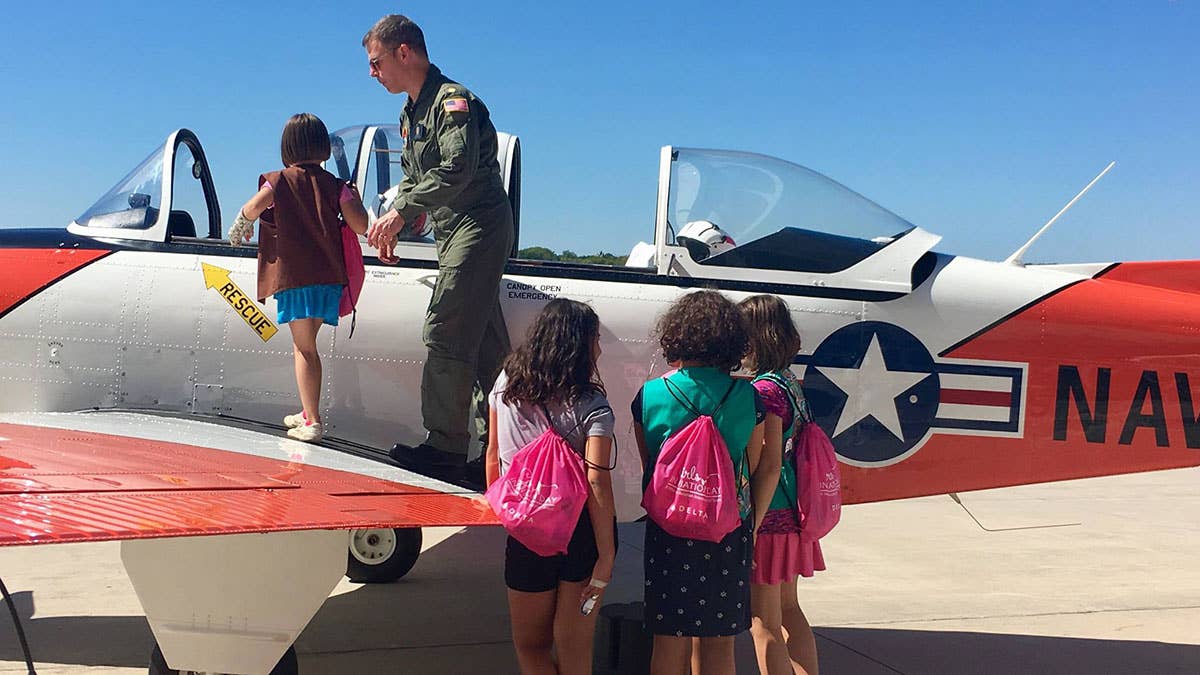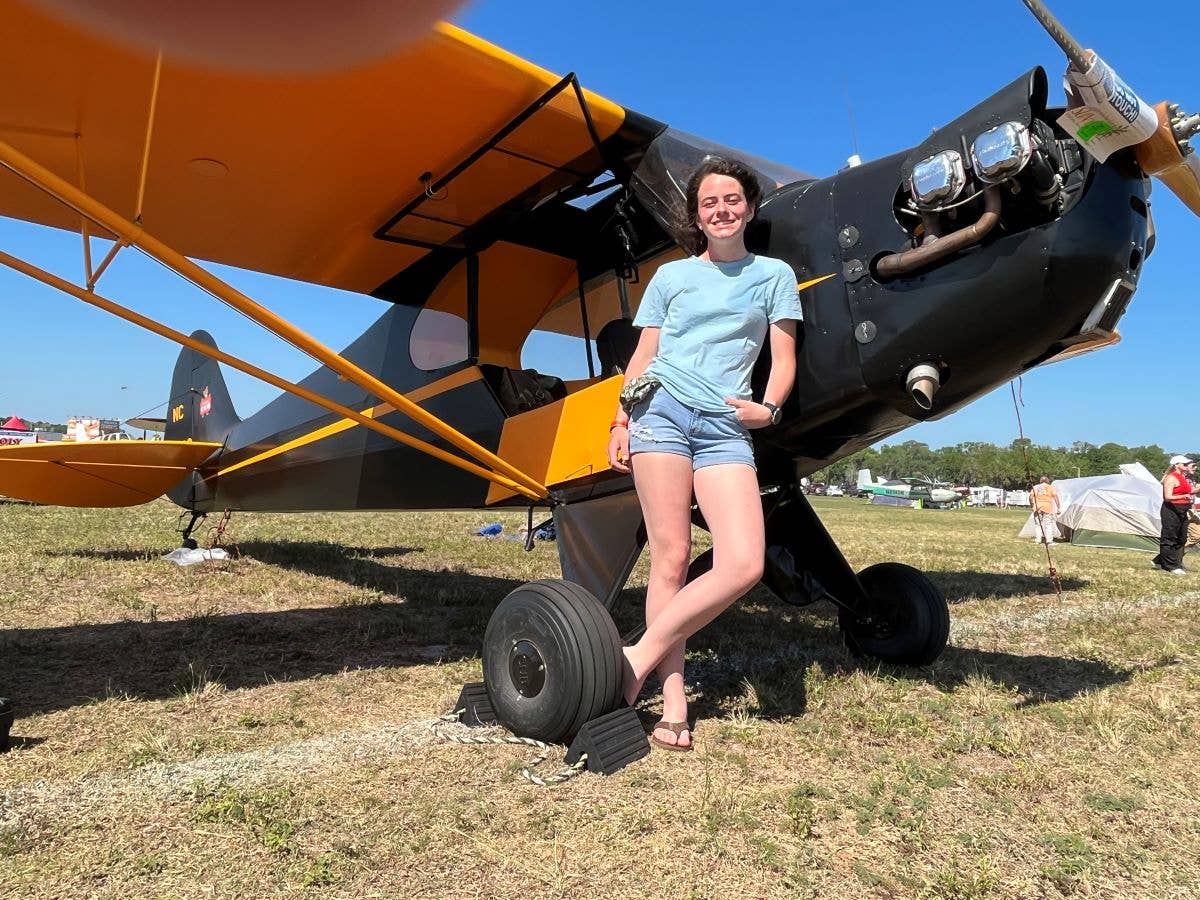The Women of Vintage Air
Female pilots who fly vintage aircraft are few and far between.
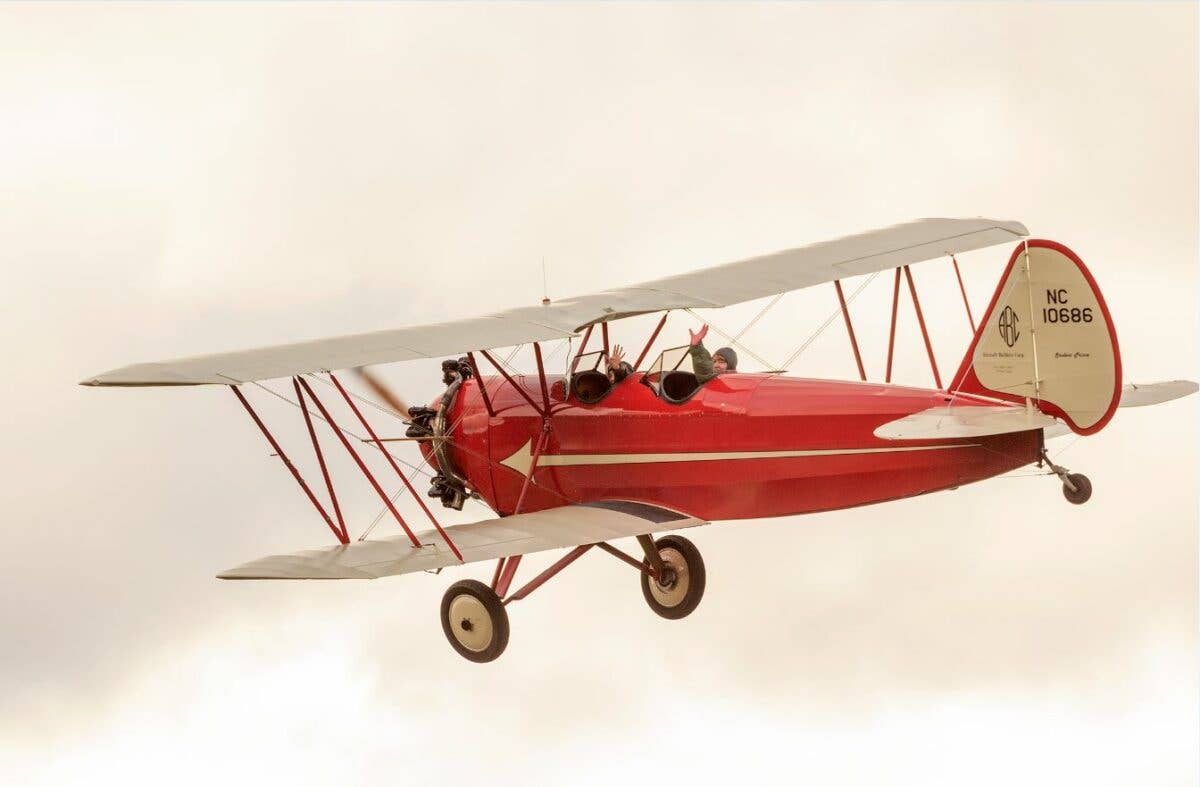
The 1931 Student Prince takes flight. [Courtesy: Summer Martell]
Ever taken a look at the names of aircraft owners in the FAA's registry? You can't help but notice that apparently men outnumber women significantly. This feels particularly true when you look at the ownership of vintage aircraft—a term used to describe any aircraft certified before 1955.
While there are women out there who own and fly these pieces of aviation history, they create a special cadre of pilots.
In honor of Women's History month, FLYING caught up with a few of these pilots to find out what made them gravitate to the vintage machines.
A Rare Vintage Biplane, and Summer Martell, Port Townsend, Washington
Martell is a 15,000-hour pilot who holds CFI, CFII, and ATP MEL certificates and type ratings in the Gulfstream 100, Gulfstream 200, Falcon 2000, and Falcon 900 EX. She’s also a designated pilot examiner (DPE).
Martell is the proud owner of a 1931 Student Prince biplane that belonged to her father.
“He was a newly minted private pilot. He’d learned to fly in Cessnas but his friends that owned and flew vintage planes loaned him their books on vintage flying by authors Gordon Baxter, Ernie Gann, and Richard Bach, and he was swept away by the romance of the stories involving antique airplanes, especially biplanes. When he saw the Student Prince for sale at Harvey Field, he was smitten. He said, ‘It smiled at me, so I had to buy it.’”
As a teen she joined her father for flights, eventually learning to fly herself.
The Student Prince is an open cockpit design, which, according to Martell, makes the piloting experience much more visceral.
“I could feel the sky as I flew through it, I could feel the temperature, the humidity. I could smell the world at 80 mph. I felt like a dog riding in the back of a pickup, noting all the layers of smells. Saltwater, freshly mowed hay, and pine trees,” she recalls, adding that the Student Prince, which was designed to be a trainer, was a good fit for teenage Martell.
“The biplane is beautiful from any angle, and it always draws a crowd, so I was never lonesome when I landed somewhere. And it took good care of me from day one. Like a patient schooling horse, the Prince forgave my beginner’s fumbles as I began learning my way around the sky, and later, how to negotiate the transition of sky to earth in a brief few seconds while the world ahead of me became completely obscured by the rising nose of the biplane to its landing attitude, leaving me with a forward view of three of the Kinner engine’s five cylinders and nothing else. The Student Prince forgave my ricochets and hard landings, and somehow, despite my best efforts to do otherwise, it managed to stay between the runway lights as I struggled to keep the nose ahead of the tail.”
The airplane has produced some strong memories, such as the first time she flew solo.
“I hooted and hollered after takeoff, but became a bit somber on downwind without the view of the back of my instructor’s head in the front cockpit. Oh boy, I really was alone. But I did it! It felt so great. That airplane has always been my champion. The second favorite memory was hand-propping it for the first time. Scary, but very confidence boosting once I’d done it.”
When asked if she has a bucket list vintage airplane she would like to fly, Martell replies, “The Alexander Eaglerock biplane that hangs in perpetuity from the ceiling above the international arrivals and departures at Sea-Tac International Airport [KSEA]. I understand preservation has its place, but it always makes me a little sad when I see that plane, motionless in the rafters, gathering dust. It is so reminiscent of the Student Prince, that I feel I could easily slip into the back cockpit and take that airplane upstairs for some fun. And every time I pass by it, in my mind’s eye, I do just that. I fantasize that I fly it south with the setting sun, never to return.”
Her advice for people who want to buy and fly a vintage airplane?
“Talk to pilots who own/fly vintage planes. They love to talk about them. They may even offer to take you flying. Bribing them with pie can be effective. Read those stories by Baxter, Gann, and Bach. If the vintage airplane bug bites you hard enough, who knows? Perhaps a vintage airplane with a for sale sign will smile at you.”
Jan Johnson, First Lady of the L-birds, Hayward, California
Johnson, who has 1,060 hours total time, owns a 1944 Vultee Stinson L-5E Sentinel ambulance, a 1945 Vultee Stinson L-5G Sentinel ambulance, a 1951 Cessna LC-126C (military 195) ambulance.
Johnson began her aviation career as a flight attendant, then decades later after entering the medical field, she decided to pursue a private pilot certificate. To her, that meant getting an airplane of her own—and she was drawn to the classic lines of vintage taildraggers.
It was Johnson's first visit to EAA AirVenture in 2010—in particular a walk through the Vintage parking—that activated her interest.
“My first visit, with two ‘AirVenture first-timer’ pilot buddies. Walking through Vintage, we came upon ‘Interstate 195’ parking, where all the Cessna 195s are lined up. Looking down a row of bumped-cowl classic taildraggers is a sight to behold. I was immediately smitten with the design of the long fuselage, the art deco interior styling, and the big Jacobs 300-hp, seven-cylinder radial powerplant standing proudly up front. They look sleek and fast even standing still. I researched the airplane that night in our motorhome in Camp Scholler, and upon returning home, I set forth on my quest to own one of these beautiful airplanes.”
“My very first airplane was a 1951 Cessna LC-126C. I was attracted to the gorgeous lines of the classic Businessliner. My particular LC-126C having documented military history was a bonus.”
The airplanes Johnson is drawn to are known in the warbird world as “L birds.” The term comes from their military designations that begin with the letter L for “liaison.” They were used as reconnaissance aircraft, artillery spotting, light transport, and air ambulances.
Johnson flew her LC-126C to Oshkosh in 2015 and 2016, and was invited to be part of the “Ladies Love Taildraggers Day” in EAA Vintage.
“It's a real honor to have your airplane brought up to the Bill and Myrt Rose Park, near the Red Barn, and be interviewed by EAA Chairman Ray Johnson (no relation). Each year, he interviews three women who flew their vintage or classic airplanes to Oshkosh. Fifteen minutes of fame was never sweeter.”
Johnson sold the LC-126C after four years because she found another airplane, a 1945 Stinson L-5G that struck her fancy.
“It fits me perfectly!” she explains, noting that as she stands over six feet tall, finding an airplane that fits can be a challenge. “I ended up purchasing that plane after the Cessna left my hangar. What a great little airplane the L-5 was to fly! Responsive, nimble—and with controls as smooth as butter.”
Johnson flew the Stinson L-5G from Hayward, California, to Oshkosh in 2018, and once again found herself interviewed by Ray Johnson.
Last summer, she had the opportunity to acquire another Stinson, an L-5E, “complete with World War II military history,” she says. “Each plane has a personality, and getting to know both of them has been fun. Then, in early 2023, I had another Cessna LC-126C fall into my lap. My partner and I purchased it together, and we’ll return this plane to flight after sitting for 30 years. When a Cessna 195/LC-126 comes into your life, you don’t think twice. You just let it happen. And consider yourself fortunate.”
Johnson's interest in vintage aircraft extends to multiengine designs as well, which she attributes to a ride aboard a Douglas DC-3 she took in the mid-1990s when she was working as a flight attendant for a national airline.
“I went for a scenic flight over the Golden Gate Bridge in San Francisco in a Douglas DC-3, owned by the Otis Spunkmeyer Cookie Company. It was a breathtaking flight and unforgettable—the epitome of the glamorous ‘Golden Age of Aviation.’ The cockpit was open, and once airborne, we were free to ‘move about the cabin’ and make small talk with the pilots. It definitely ‘set the hook’ for me with vintage airplanes. After that flight, a pilot let me pose for photos in his beautiful Stearman.”
Johnson's vintage airplane bucket list includes a Stearman, a Waco, a Beech Staggerwing, and a Howard DGA-15. She is currently learning to fly a 1940s-era Twin Beech.
“It has two Pratt & Whitney R-985 radials, a bullet-shaped nose in between, and a sleek tailwheel design that harkens back to 1940s Hollywood,” she says. “I envision Myrna Loy and Bette Grable stepping out of the luxuriously-appointed cabin and waving to their fans.”
Advice for people who want to buy and fly a vintage airplane?
“Do your research! Owning, maintaining, and flying a vintage airplane requires time and money. A lot of it. Find a pilot who you can trust and ask them a lot of questions. Join the various type clubs online and introduce yourself. If possible, talk to mechanics who know the old planes. Go imaginary ‘plane shopping’ at any of the large fly-ins across the country. Walk up to total strangers (well, there really are no ‘strangers’ in aviation) who own the type of airplane you like. Almost always, they’ll let you climb into the pilot seat. Try it on for size. Can you reach the rudder pedals? How is visibility? Scrutinize each plane—things you like vs. things that may hinder you buying one. Availability, cost, maintenance, and spare parts. You can never go wrong with a 1940s Piper J-3 Cub, Taylorcraft, Aeronca, Stinson, or early Cessna.”
She also recommends getting your tailwheel endorsement, as most vintage airplanes are tailwheel-equipped.
For aircraft acquisition, the combination of the aging pilot population, persistence and determination, and being in the right place at the right time will get you there, says Johnson.
"Both my Stinsons came from pilots in their 80s who could no longer fly. I’m certain that all they want is for someone to take care of their airplane, fly it often, and display it at air shows and fly-ins. And keep the mystique and magic alive. That’s my personal mission with my airplanes. Share them with others and honor the history."
Heather 'Rat' McNevin, Northfield, Minnesota
McNevin has 1,100 hours total time and holds a commercial certificate with single- and multiengine ratings, CFI/CFII/MEI instructor certificates, and type ratings in the DC-3 and B-25.
Heather McNevin, known as Rat (short for Ramp Rat), says she doesn't own an airplane yet, partly because there are too many out there to fly. The aviation bug hit her early. She started taking lessons at age 14 at Aiken Municipal Airport—Steve Kurtz Field (KAIT) in Aiken, Minnesota. She trained in both a Piper Cherokee and a 1946 Aeronca Champ owned by her instructor and figured out pretty quickly she liked the Champ the best.
"The Champ felt most like flying a fighter plane to me, so it became my favorite," she says. She soloed at the age of 16 in the Champ and, on the first landing—which she greased—she let out a whoop that, according to the people watching from the ramp, was heard over the sound of the airplane.
The Champ was the first in a long line of vintage airframes.
“Since my initial Champ flying, I’ve flown a few other vintage aircraft: Navion, Waco, DC-3, T-6, BT-13, B25, Stearman, PA-12, J-4, Aeronca Chief, Globe Swift, [and] PT-22. I feel more comfortable in an old, loud aircraft with just the basic instruments than I do in a brand new glass cockpit.”
According to McNevin, you don't so much fly a vintage airplane as you become part of its legacy.
“I've flown many vintage aircraft and enjoyed something about each of them. When I’m flying that airplane, I’m part of a long line of aviators that have experienced the joy of flight in that aircraft, and it's my responsibility to share that magic with others. It's like when I have the privilege of flying warbirds, I think of the necessity to share the stories of the people that flew them during the war because some of them didn’t make it home. These old machines shaped the world. They reduced travel time, bolstered business, connected us all, and fought oppression. I like the feel of flying along and realizing ‘this is how aviation started, this is what it was like’ or ‘this was once the best, most luxurious method of travel!’ For me, it's not just flying, but being a steward of history.”
Instead of a bucket list when it comes to airplanes, McNevin has a “to-do list” of airplanes she would like to fly.
“I have a type rating in the DC-3, but I have wanted to fly a specific DC-3 for over a decade. I remember seeing the yellow DC-3 ‘Duggy’ at Oshkosh for many years, and every time I’d see it I said I would one day fly that aircraft. I would even tell Duggy the DC-3 that one day we will fly together. Amazingly enough, I found out Duggy lives not that far from me and may be returning to the skies.
“My recent type rating was in the B-25, and I really enjoyed the training and learning how they designed and operated aircraft in the ‘30s and ‘40s. I’d like to continue to fly other bombers of the day and see how they compare. I think the B-29 would be amazing, as I’ve recently been on a reading binge involving their missions. I have decided it would be cool to fly every aircraft type that the WASPs flew.”
Her advice to people who want to buy and fly a vintage airplane? “Be prepared to maintain it correctly. These aircraft are old and a little TLC goes a long way. Don’t skimp on maintenance. Be a good caretaker of history. Also, make sure to get good training, as with any new venture into an unfamiliar aircraft, and share your aircraft with as many people as you can so they can see and appreciate it. You’ll make new friends and it's always fun when someone admires your aircraft.”

Subscribe to Our Newsletter
Get the latest FLYING stories delivered directly to your inbox


